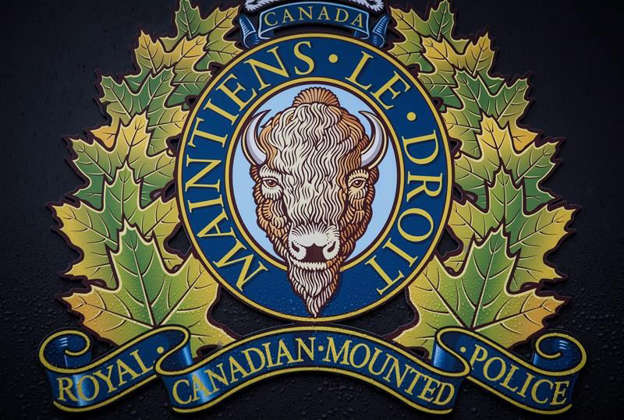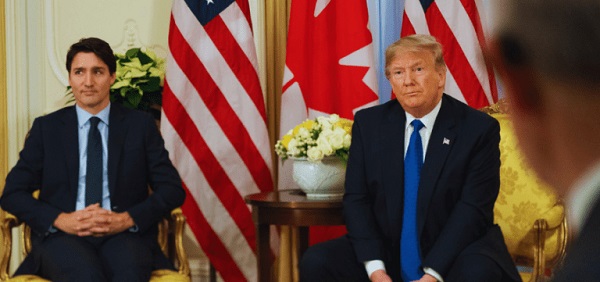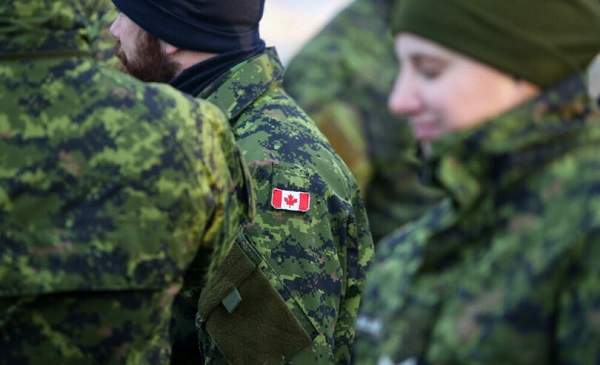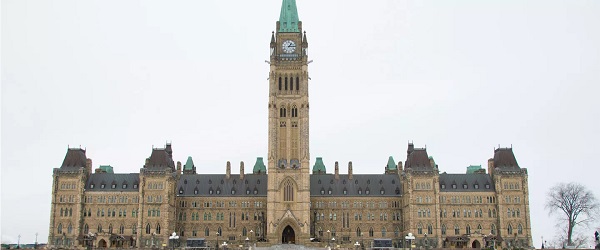Alberta
Complete overhaul of rural policing in Alberta! Province adding 500 RCMP officers and support staff

Justice Minister and Solicitor General Doug Schweitzer shakes hands with an RCMP officer in Leduc County.
Historic investment in rural policing
Alberta is adding more than 500 RCMP positions in rural communities across the province and fostering new public safety partnership with municipalities.
The Government of Alberta’s new police funding model will inject more than $286 million over five years into frontline law enforcement for these additional RCMP officer and civilian positions. This new cost-sharing partnership will see small and rural communities begin to pay a portion of frontline policing costs, bringing them into line with larger communities and cities.
Under the cost-sharing terms in the Provincial Police Service Agreement (PPSA), Alberta pays 70 per cent of policing costs and the federal government covers the remaining 30 per cent. With the additional investment from municipalities, the federal share of the PPSA will increase as well. This partnership will constitute a total increase in rural police funding of more than $286 million over five years with every dollar of the additional funds invested in frontline policing.
The province is creating a new Alberta Police Advisory Board, where municipal leadership will have a seat at the table, working in collaboration with law enforcement to ensure local needs are heard and implemented. This new governance mechanism will ensure that policing is in line with the priorities of those they are protecting.
“Ensuring Albertans are safe, secure, and protected in their communities goes to the heart of who we are as a government. We want to ensure we fund law enforcement in an equitable and sustainable way that will ensure we have more police in our communities. With this new police funding model, we are making the single largest investment in rural policing since the March West and delivering on our promise to enhance public safety.”
“Crime affects many in my own rural community, and it is an issue that is incredibly personal to me. All Albertans deserve to feel safe in their own homes and confident that they will not fall victim to violent or property crime. This new police funding model will provide increased security and certainty for rural Albertans, and value for taxpayer dollars.”
“The Government of Alberta has made an unprecedented investment in their police service, and we are ready to deliver on that commitment. The funding model announced will allow the Alberta RCMP to put additional resources where they are needed most immediately – on the frontline in your detachments, protecting your backyards and your farmyards, pushing back crime in a sophisticated and focused manner.”
“Rural Municipalities of Alberta appreciates the Government of Alberta’s willingness to consult on this issue, and as a result of input from RMA and rural municipalities, implement a phased-in police-costing model. Rural crime has been an ongoing issue in Alberta in recent years, and rural municipalities recognize they need to share in the costs of the solutions to support safer communities.”
“AUMA has long advocated for a more equitable police-funding model to address RCMP vacancies and the rising costs of policing while improving community safety. We’re pleased to see action on this critical priority by the provincial government, as safe and healthy municipalities build strong communities and a stronger Alberta. Further consultation is critical to supporting local governments with the policing resources they need, and we look forward to actively contributing to the Alberta Police Advisory Board.”
This partnership places priority on adding uniformed patrol officers in rural RCMP detachments, increasing the total number from under 1,600 to about 1,900, and will also add members to specialized RCMP units that dismantle organized crime and drug trafficking and investigate auto and scrap metal theft.
Furthermore, the new civilian positions will assist with administrative tasks and investigative support to increase response times and help ensure officers have the support network they need to protect Albertans by spending more time on roads and in communities.
Quick facts
- Small and rural communities, with some exceptions, will begin contributing a portion of their frontline policing costs in 2020. To give communities time to adjust, the new funding model is being phased in: communities will contribute 10 per cent of policing costs in 2020, followed by 15 per cent in 2021, 20 per cent in 2022 and 30 per cent in 2023.
- Policing costs for each community will be determined by municipal tax base (as measured by equalized assessment) and population to calculate a base cost. Communities will also be eligible for other subsidies that consider other factors that may affect local policing costs.
- Current annual PPSA amount, 2019-20 (prior to new police funding partnership): $374.8 million
- Government of Alberta contribution: $262.4 million
- Government of Canada contribution: $112.4 million
- Additional investments to current PPSA to April 1, 2024 will be: $286,605,021
- Government of Alberta contribution: $200,623,515
- Government of Canada contribution: $85,981,506
- All additional investments will go towards more frontline resources.
Alberta
Integrated Border Enforcement Team makes 189 kg cocaine bust at Coutts port of entry

News release from Alberta RCMP
Canada Border Services Agency (CBSA) officers, working with the Integrated Border Enforcement Team (IBET) in Alberta, a joint force operation between the RCMP Federal Policing Northwest Region, CBSA and Calgary Police Service, seized 189 kg of cocaine following a secondary examination of a commercial truck seeking entry at the Coutts port of entry on Nov. 13, 2024. The drugs have an approximate wholesale value of $2 million.
“The safety and security of Canadians is the RCMP Federal Policing Northwest Region’s top priority. With the support of various law enforcement agencies, we’ve successfully prevented harmful drugs from entering Canada and harming our communities.
- Supt. Sean Boser, Officer in Charge of Federal Serious Organized Crime and Border Integrity – Alberta, RCMP Federal Policing Northwest Region
“I want to commend our CBSA officers who prevent illegal narcotics from breaching our borders and disrupt crime networks. In cooperation with our law enforcement partners, the RCMP and the Calgary Police Service, this significant seizure serves as another example of how Canada’s borders are being secured and drugs are kept off our streets.”
- Ben Tame, Director, Southern Alberta and Southern Saskatchewan District, Canada Border Services Agency
“Our efforts to combat drug trafficking rely heavily on working closely with our partner law enforcement agencies, including the CBSA and RCMP. This is a significant seizure that undoubtedly had the potential to cause serious damage to our community.”
- Supt. Jeff Bell, Criminal Operations & Intelligence Division, Calgary Police Service
IBET’s mandate is to enhance border integrity and security along the shared border, between designated ports of entry, by identifying, investigating and interdicting persons, organizations and goods that are involved in criminal activities.
All partners are engaged in the ongoing criminal investigation.
Alberta
Alberta government must do more to avoid red ink

From the Fraser Institute
By Tegan Hill
As Albertans look toward a new year, it’s worth reviewing the state of provincial finances. When delivering news last month of a projected $4.6 billion budget surplus for fiscal year 2024/25, the Smith government simultaneously warned Albertans that a budget deficit could be looming. Confused? A $4.6 billion budget surplus sounds like good news—but not when its on the back of historically high (and incredibly volatile) resource revenue.
In just the last 10 years, resource revenue, which includes oil and gas royalties, has ranged from a low of $3.4 billion in 2015/16 (inflation-adjusted) to a high of $26.1 billion in 2022/23. Inflation-adjusted resource revenue is projected to be relatively high in historical terms this fiscal year at $19.8 billion.
Resource revenue volatility is not in and of itself a problem. The problem is that provincial governments tend to increase spending when resource revenue is high, but do not similarly reduce spending when resource revenue declines.
Overall, in Alberta, a $1 increase in inflation-adjusted per-person resource revenue is associated with an estimated 56-cent increase in program spending the following fiscal year, but a decline in resource revenue is not similarly associated with a reduction in program spending. Over time, this pattern has contributed to historically high levels of government spending that exceed ongoing stable levels of government revenue.
And while the Smith government has shown some restraint, spending levels remain significantly higher than reliable ongoing levels of government revenue. Put simply, unpredictable resource revenue continues to help fund Alberta’s spending—and when resource revenues inevitably fall, Alberta is at high risk of plummeting into a deficit.
Indeed, Finance Minister Nate Horner continues to emphasize that we are “living in extremely volatile times” and warning that if oil prices fall below $70.00 per barrel a budget deficit is “very likely.” According to recent forecasts, the price of oil may hit $66.00 per barrel in 2025.
To avoid this fate, the Alberta government must do more to rein in spending. Fortunately, there’s plenty of options.
For example, the government spends billions in subsidies (a.k.a. corporate welfare) to select industries and businesses every year. A significant body of research shows these subsidies fail to generate widespread economic benefits. Eliminating this corporate welfare, which would generate significant savings in the budget, is a good place to start.
If the Smith government fails to rein in spending, and Alberta incurs a budget deficit, it will only mean more government debt on the backs of Albertans. And with Albertans already paying approximately $650 each in provincial government debt interest each year, that’s something Albertans simply can’t afford.
With a new year set to begin, the Smith government continues to warn of a budget deficit. But rather than simply prepare Albertans for more debt accumulation—financed by their tax dollars—the government should do more to avoid red ink. That means cutting wasteful government spending.

Tegan Hill
Director, Alberta Policy, Fraser Institute
-

 Health21 hours ago
Health21 hours agoTrump doubles down on using RFK Jr. to study possible link between vaccines and autism
-

 Crime20 hours ago
Crime20 hours agoBiden’s ‘preemptive pardons’ would set ‘dangerous’ precedent, constitutional scholar warns
-

 Business22 hours ago
Business22 hours agoCanada needs to get serious about securing its border
-

 Business1 day ago
Business1 day agoOut-Trumping Trump: A Mission Without a Win
-

 Business2 days ago
Business2 days agoFor the record—former finance minister did not keep Canada’s ‘fiscal powder dry’
-

 Business23 hours ago
Business23 hours agoCanadians face massive uncertainly and turbulence in 2025
-

 armed forces2 days ago
armed forces2 days agoCanadian military deployed ‘gender advisors’ to Ukraine, Haiti at taxpayers’ expense
-

 International2 days ago
International2 days agoGlobalist elites are trying to ‘protect democracy’ by eliminating right leaning competition






